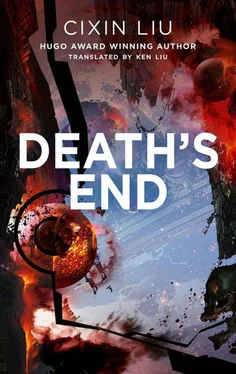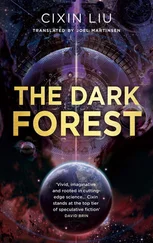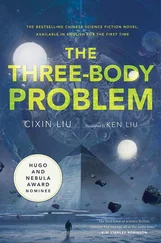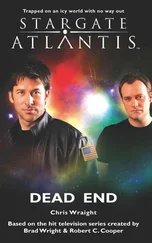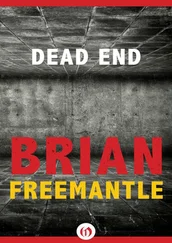“This is very likely.” Wade looked up. “Isn’t it?” Those inside the conference understood that he was speaking to the sophons hovering around them like ghosts. Four light-years away, on that distant world, other invisible beings were also “attending” their meeting. The presence of the sophons was something that people tended to forget. When they remembered it, besides fright, they also felt a kind of insignificance, as though they were a swarm of ants under the magnifying glass of some playful, cruel child. It was very difficult to maintain confidence when one realized that whatever plans one came up with would be known by the enemy long before they were even explained to the supervisor. Humanity had to struggle to adjust to this kind of warfare, in which they were completely transparent to the enemy.
But now, Wade seemed to have changed the situation slightly. In his scenario, the enemy’s knowledge of the plan was an advantage. The Trisolarans would know every detail about the trajectory of the probe, and could easily intercept it. Even though the sophons allowed the Trisolarans to learn about humanity, surely they would still be interested in capturing a live specimen for up-close study.
In traditional intelligence warfare, sending a spy whose identity was known to the enemy was a meaningless gesture. But this war was different. Sending a representative of humanity into the Trisolaran Fleet was, by itself, a valiant gesture, and it made no difference that the Trisolarans would know the individual’s identity ahead of time. The PIA didn’t even need to figure out what the spy had to do once he or she got there: As long as the person could be safely and successfully inserted into the fleet, the possibilities were endless. Given that the Trisolarans were transparent in thought and vulnerable to stratagems, Wade’s idea became even more attractive.
We need to send a representative of humanity into the heart of the enemy.
Excerpt from A Past Outside of Time
Hibernation: Man Walks for the First Time Through Time
A new technology can transform society, but when the technology is in its infancy, very few people can see its full potential. For example, when the computer was first invented, it was merely a tool for increasing efficiency, and some thought five computers would be enough for the entire world. Artificial hibernation was the same. Before it was a reality, people just thought it would provide an opportunity for patients with terminal illnesses to seek a cure in the future. If they thought further, it would appear to be useful for interstellar voyages. But as soon as it became real, if one examined it through the lens of sociology, one could see that it would completely change the face of human civilization.
All this was based on a single idea: Tomorrow will be better.
This was a relatively new faith, a product of the last few centuries before the Crisis. Previously, such an idea of progress would have been laughable. Medieval Europe was materially impoverished compared to the Classical Rome of a thousand years earlier, and was more intellectually repressed. In China, the lives of the people were worse during the Wei, Jin, and Southern and Northern Dynasties compared to the earlier Han Dynasty, and the Yuan and Ming Dynasties were much worse than the earlier Tang and Song Dynasties. But after the Industrial Revolution, progress became a constant feature of society, and humanity’s faith in the future grew stronger.
This faith reached its apex on the eve of the Trisolar Crisis. The Cold War had been over for some time, and though problems such as environmental degradation persisted, they were merely unpleasant. The material comforts of life improved at a rapid pace, and the trend seemed to accelerate. If one surveyed people about visions of the future, they might give different answers for how things would be in ten years, but few would doubt that in another hundred years, humanity would be living in paradise. It was easy to believe such a thing: They could just compare their own lives with the lives of their ancestors a hundred years earlier!
If hibernation were possible, why would you linger in the present?
When examined from the perspective of sociology, the biotechnology breakthrough of human cloning was far less complicated than hibernation. Cloning raised moral questions, but they mostly troubled those with a moral view influenced by Christianity. The troubles brought about by hibernation, on the other hand, were practical, and affected the entire human race. Once the technology was successfully commercialized, those who could afford it would use it to skip to paradise, while the rest of humanity would have to stay behind in the comparatively depressing present to construct that paradise for them. But even more worrisome was the greatest lure provided by the future: the end of death.
As modern biology advanced apace, people began to believe that death’s end would be achievable in one or two more centuries. If so, those who chose hibernation were taking the first steps on the staircase to life everlasting. For the first time in history, Death itself was no longer fair. The consequences were unimaginable.
The situation was akin to the dire conditions of post-Crisis Escapism. Later, historians would call it Early Escapism or Time Escapism. Thus, even pre-Crisis, governments around the world suppressed hibernation technology more zealously than cloning technology.
But the Trisolar Crisis changed everything. In a single night, the paradise of the future turned into a hell on Earth. Even for terminal patients, the future no longer appealed: By the time they woke up, perhaps the world would be bathed in a sea of fire, and they wouldn’t even be able to find an aspirin.
Thus, after the Crisis, hibernation was allowed to develop without constraints. Soon, the technology became commercially viable, and the human race possessed the first tool that allowed them to traverse large swaths of time.
Crisis Era, Years 1–4 Cheng Xin
Cheng Xin went to Sanya on Hainan Island to research hibernation.
This tropical island seemed an incongruous site for the largest hibernation research center, which was operated by the Chinese Academy of Medical Sciences. While it was the middle of winter on the mainland, spring ruled here.
The hibernation center was a white building hidden behind lush vegetation. About a dozen test subjects inside engaged in experimental, short-term hibernation. So far, no one had been put into hibernation with the intent of crossing the centuries.
Cheng Xin first asked whether it was possible to shrink the equipment necessary to support hibernation down to one hundred kilograms.
The director of the research center laughed. “One hundred kilograms? You’d be lucky getting it down to one hundred metric tons!”
The director was exaggerating, but only slightly. He showed Cheng Xin around the center, and Cheng Xin learned that artificial hibernation didn’t exactly match its public image. For one thing, it didn’t involve ultra-low temperatures. The procedure replaced the blood in the body with an antifreeze cryoprotectant, then brought the body temperature down to minus-fifty-degrees Celsius. Relying on an external cardiopulmonary bypass system, the body’s organs maintained an extremely low level of biological activity. “It’s like standby mode on a computer,” said the director. The entire system—hibernation tank, life-support system, cooling equipment—weighed about three metric tons.
As Cheng Xin discussed possible ways to miniaturize the hibernation setup with the center’s technical staff, she was startled by a realization: If the body’s temperature must be maintained around minus-fifty-degrees Celsius, then in the frigid conditions of outer space, the hibernation chamber needed to be heated, not cooled. In the long journey through trans-Neptunian space in particular, outside temperature would be close to absolute zero. In contrast, minus-fifty-degrees Celsius was like the inside of a furnace. Considering that the journey would take one to two centuries, the most practicable solution was radioisotope heating. The director’s claim of one hundred metric tons was thus not too far from the truth.
Читать дальше
